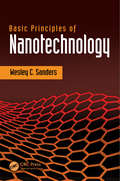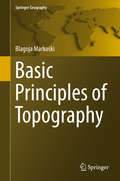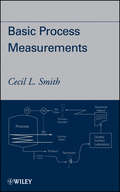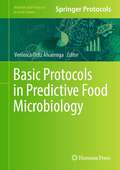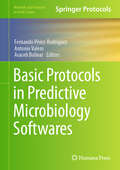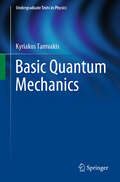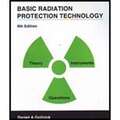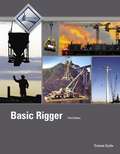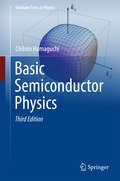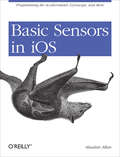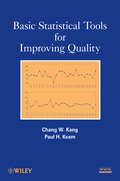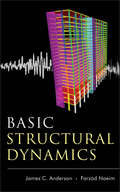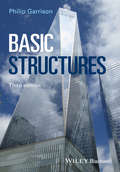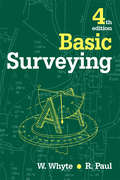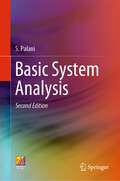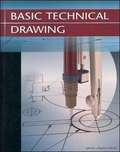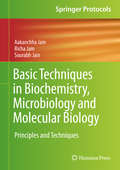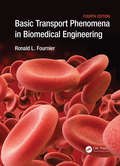- Table View
- List View
Basic Principles of Nanotechnology
by Wesley C. SandersThe book allows the reader to have a basic understanding of the structure and properties of nanoscale materials routinely used in nanotechnology-based research and industries. To add, the book describes the operation of nanoscale transistors and the processes used to fabricate the devices. Additionally, it presents research involving the use of carbon nanotubes, graphene, and molecules to create non-silicon based electronic devices. It aims to provide an understanding of the operation of the most frequently used fabrication and characterization procedures, such as scanning electron microscopy, atomic force microscopy, etch, e-beam lithography, and photolithography.
Basic Principles of Topography (Springer Geography)
by Blagoja MarkoskiThis book gives a comprehensive overview of all relevant elements in topography and their practical application. It elaborates on the classical representation of terrain on maps such as cartographic projections, together with their classification, scale, and geographical elements. It is richly illustrated with photographs, maps and figures, in which the theoretical explanations are clarified. Readers will become acquainted with the physical characteristics of the ground, i. e. tectonic and erosive shapes, the importance and classification of terrain, genetic (fluvial, abrasive, glacial, karst) and topographic types such as higher (mountains, hills, peaks) and lower terrain (valleys, fields). In addition, the book discusses cartometry and coordinate systems, orientation in space (geographic, topographic, tactical) including by means of maps, instruments and the night sky and elaborates new techniques and technologies such as aerial photogrammetric imagery, global navigation satellite systems and LiDAR. The book also includes methods for the practical execution of concrete measurement operations, such as determining position and movement on land with maps, compass and azimuth which makes it especially useful for practitioners and professionals, e. g. , for landscape planning, military exercises, mountaineering, nature walks etc. As such it offers a valuable guide not only for undergraduate students but also for researchers in the fields of geography, geosciences, geodesy, ecology, forestry and related areas looking for an overview on topography. Uniquely, the book also features an extensive glossary of topographical terms.
Basic Process Measurements
by Cecil L. SmithA unique resource for process measurementBasic Process Measurements provides a unique resource explaining the industrial measuring devices that gauge such key variables as temperature, pressure, density, level, and flow. With an emphasis on the most commonly installed technologies, this guide outlines both the process variable being measured as well as how the relevant measuring instruments function. The benefits of each technology are considered in turn, along with their potential problems. Looking at both new and existing technologies, the book maintains a practical focus on properly selecting and deploying the best technology for a given process application.The coverage in Basic Process Measurements enables the practitioner to: Resolve problems with currently installed devices Upgrade currently installed devices to newer and better technologies Add instruments for process variables not previously measurable Evaluate device installations from a perspective of both normal process operating conditions and abnormal conditions Determine the best technology for a given set of process conditions Designed for a wide range of technical professionals, Basic Process Measurements provides a balanced treatment of the concepts, background information, and specific processes and technologies making up this critical aspect of process improvement and control.
Basic Protocols in Encapsulation of Food Ingredients (Methods and Protocols in Food Science)
by Andrea Gomez-ZavagliaThis volume provides a comprehensive introduction into methods and procedures on encapsulation of sensitive food nucleus. Chapters guide readers through different strategies to encapsulate bioactive compounds and cells. Additionally, chapters will detail methods on three major issues; the nucleus to be encapsulated, the carrier material, and the encapsulation technique. Authoritative and cutting-edge, Basic Protocols in Encapsulation of Food Ingredients aims to give guidance on encapsulation techniques and an understanding on tools, materials, and supplies to implement innovative approaches.
Basic Protocols in Encapsulation of Food Ingredients (Methods and Protocols in Food Science)
by Andrea Gomez-ZavagliaThis second volume, details circular economy, innovative materials and techniques, and Omics' techniques to understand the mechanisms and pathways explaining the encapsulation and delivery of the defined nuclei. Chapters will provide sufficient guidance into encapsulation techniques and into the basic understanding of what is needed in terms of tools, materials and supplies to implement innovative approaches in Food Science and Technology. Written in the format of the Methods and Protocols in Food Science (MeFS) series, the chapters include an introduction to the respective topic, list necessary materials and reagents, detail well-established and validated methods for readily reproducible laboratory protocols and contain notes on how to avoid or solve typical problems. Authoritative and cutting-edge, Basic Protocols in Encapsulation of Food Ingredients, Second Edition aims to provide well-established protocols and procedures largely used by both academics and industrials.
Basic Protocols in Enology and Winemaking (Methods and Protocols in Food Science)
by Maurício Bonatto Machado de CastilhosThis volume details methods using classical apparatus and mechanisms to study enology and winemaking. Chapters guide readers through protocols on titration, distillation, spectrophotometry, advanced methods applying High-Performance Liquid Chromatography with Mass Spectrometry (HPLC-MSn), Gas Chromatography coupled with Mass Spectrometry (GC-MS) and Nuclear Magnetic Resonance (NMR). Authoritative and cutting-edge, Basic Protocols in Enology and Winemaking aims to be a useful and practical guide to new researchers and experts looking to expand their knowledge.
Basic Protocols in Foods and Nutrition (Methods and Protocols in Food Science)
by Cinthia Baú Betim CazarinThis book provides comprehensive knowledge and a detailed step by step description of experimental protocols for the determination of food intake, body weight changes, and some metabolic markers. Chapters are split into two parts detailing experimental diets, monitor food intake, weight gain, evaluate biological samples, predict physiological changes, evaluate bioavailability of bioactive, anamnesis, measure the metabolic rate, assessing the body composition, assessing glucose homeostasis, and monitoring the metabolomic pathways. Authoritative and cutting-edge, Basic Protocols in Foods and Nutrition aims to be a foundation for future studies and to be a source of inspiration for new investigations in the field.
Basic Protocols in Predictive Food Microbiology (Methods and Protocols in Food Science)
by Verônica Ortiz AlvarengaThis volume details well-established protocols and procedures being used by laboratories and the industry to study Predictive Microbiology in Foods. Chapters guide readers through methods to design and collect data to generate predictive models, the development of a predictive model, approaches the behavior mainly, and experiments in predictive microbiology. Written in the format of the Methods and Protocols in Food Science series, chapters list necessary materials and methods for readily reproducible protocols. Authoritative and cutting-edge, Predictive Food Microbiology aims to be a foundation for future studies and to be a source of inspiration for new investigations in the field.
Basic Protocols in Predictive Microbiology Softwares (Methods and Protocols in Food Science)
by Antonio Valero Fernando Pérez-Rodríguez Araceli BolívarThis volume provides an overview of the existing predictive microbiology software tools, describing the main characteristics of use and application. Chapters will guide readers through tool features and functionalities, and specific case studies. Written in the format of the Methods and Protocols in Food Science series, the chapters include an introduction to the respective topic, list necessary materials and reagents, detail well established and validated methods for readily reproducible laboratory protocols and contain notes on how to avoid or solve typical problems. Authoritative and cutting-edge, Basic Protocols in Predictive Microbiology Softwares aims to ensure successful results in the further study of this vital field.
Basic Quantum Mechanics (Undergraduate Texts in Physics)
by Kyriakos TamvakisThis textbook on quantum mechanics has been designed for use in two-semester undergraduate courses. It describes the basic concepts of quantum mechanics, explains the use of the mathematical formalism and provides illustrative examples of both concepts and methods. Although the aim is to enable students to master the use of quantum mechanics as a tool, the author also discusses the meaning of quantum concepts. To this end the book contains a variety of relevant examples, worked out in considerable detail, as well as a substantial number of pertinent problems and exercises. The latter will be extremely helpful, if not essential, for gaining a deep understanding and command of the subject. This book is based on the author's thirty years experience of teaching the subject.
Basic Radiation Protection Technology: Sixth Edition
by Daniel A. GollnickBasic Radiation Protection Technology
Basic Rigger Trainee Guide
by NccerThis exceptionally produced trainee guide features a highly illustrated design, technical hints and tips from industry experts, review questions and a whole lot more! Key content includes: Rigging Practices, Crane Safety and Emergency Procedures, Basic Principles of Cranes, and Crane Communications.
Basic Semiconductor Physics (Graduate Texts in Physics)
by Chihiro HamaguchiWhen the ?rst edition ofBasic Semiconductor Physics was published in 2001, there were already many books, review papers and scienti'c journals de- ing with various aspects of semiconductor physics. Since many of them were dealing with special aspects of newly observed phenomena or with very f- damental physics, it was very di'cult to understand the advanced physics of semiconductors without the detailed knowledge of semiconductor physics. For this purpose the author published the ?rst edition for the readers who are involved with semiconductor research and development. Basic Semiconductor Physics deals with details of energy band structures, e'ective mass eq- tion and k#65533;p perturbation, and then describes very important phenomena in semiconductors such as optical, transport, magnetoresistance, and quantum phenomena. Some of my friends wrote to me that the textbook is not only basic but advanced, and that the title of the book does not re'ect the c- tents. However, I am still convinced that the title is appropriate, because the advanced physics of semiconductor may be understood with the knowledge of the fundamental physics. In addition new and advanced phenomena - served in semiconductors at an early time are becoming well-known and thus classi'ed in basic physics. After the publication of the ?rst edition, many typographical errors have been pointed out and the corrected version was published in 2006. The p- lisher and my friends persuade me to revise the book adding new chapters, keeping the subject at the appropriate level.
Basic Semiconductor Physics (Graduate Texts in Physics)
by Chihiro HamaguchiThis textbook presents a detailed description of basic semiconductor physics, covering a wide range of important phenomena in semiconductors, from simple to advanced. It introduces and explains four different methods of energy band calculations in the full band region and covers fundamental topics such as the effective mass approximation and electron motion in a periodic potential, the Boltzmann transport equation, and deformation potentials used for the analysis of transport properties. The text also examines experimental and theoretical analyses of cyclotron resonance in detail and reviews essential optical and transport properties, while covering optical transitions, electron–phonon interaction, and electron mobility. It presents numerical calculations of scattering rate, relaxation time, and mobility for typical semiconductors with bulk, quantum well and HEMT structures including wideband gap materials such as GaN and SiC in addition to IV and III-V semiconductors.The updated fourth edition includes coverage of new topics such as surface-modulated superlattices, Wannier–Stark effect, Bloch oscillation, wide band gap semiconductors, and photonic crystals. Featuring full-color diagrams calculated with updated physical parameters, as well as chapter-end problems and solutions, this tried and tested textbook on the basics of semiconductors physics is the cornerstone to any graduate or upper-level undergraduate course on the subject.
Basic Sensors in iOS: Programming the Accelerometer, Gyroscope, and More
by Alasdair AllanWhat really sets the iPhone apart from laptops and PCs is its use of onboard sensors, including those that are location-enabled. This concise book takes experienced iPhone and Mac developers on a detailed tour of iPhone and iPad hardware by explaining how these sensors work, and what they're capable of doing.With this book, you'll build sample applications for each sensor, and learn hands-on how to take advantage of the data each sensor produces. You'll gain valuable experience that you can immediately put to work inside your own iOS applications for the iPhone, iPod touch, and iPad. This book helps you focus on:Camera: learn how to take pictures and video, create video thumbnails, customize video, and save media to the photo albumAudio: use the media picker controller and access the iPod music library in your own application, and enable your app to record and play sampled audioAccelerometer: write an application that uses this sensor to determine device orientationMagnetometer: learn how this sensor verifies compass headingsCore Motion: use this framework to receive motion data from both the accelerometer and the vibrational gyroscopeThis short book is part of a collection that will, along with new material, be compiled into a larger book, iOS Sensor Programming. The other books in this collection are Augmented Reality in iOS, Geolocation in iOS, and iOS Sensor Apps with Arduino.
Basic Statistical Tools for Improving Quality
by Chang W. Kang Paul H. KvamThis book is an introductory book on improving the quality of a process or a system, primarily through the technique of statistical process control (SPC). There are numerous technical manuals available for SPC, but this book differs in two ways: (1) the basic tools of SPC are introduced in a no-nonsense, simple, non-math manner, and (2) the methods can be learned and practiced in an uncomplicated fashion using free software (eZ SPC 2.0), which is available to all readers online as a downloadable product. The book explains QC7 Tools, control charts, and statistical analysis including basic design of experiments. Theoretical explanations of the analytical methods are avoided; instead, results are interpreted through the use of the software.
Basic Structural Dynamics
by Farzad Naeim James C. AndersonA concise introduction to structural dynamics and earthquake engineeringBasic Structural Dynamics serves as a fundamental introduction to the topic of structural dynamics. Covering single and multiple-degree-of-freedom systems while providing an introduction to earthquake engineering, the book keeps the coverage succinct and on topic at a level that is appropriate for undergraduate and graduate students. Through dozens of worked examples based on actual structures, it also introduces readers to MATLAB, a powerful software for solving both simple and complex structural dynamics problems.Conceptually composed of three parts, the book begins with the basic concepts and dynamic response of single-degree-of-freedom systems to various excitations. Next, it covers the linear and nonlinear response of multiple-degree-of-freedom systems to various excitations. Finally, it deals with linear and nonlinear response of structures subjected to earthquake ground motions and structural dynamics-related code provisions for assessing seismic response of structures. Chapter coverage includes:Single-degree-of-freedom systemsFree vibration response of SDOF systemsResponse to harmonic loadingResponse to impulse loadsResponse to arbitrary dynamic loadingMultiple-degree-of-freedom systemsIntroduction to nonlinear response of structuresSeismic response of structuresIf you're an undergraduate or graduate student or a practicing structural or mechanical engineer who requires some background on structural dynamics and the effects of earthquakes on structures, Basic Structural Dynamics will quickly get you up to speed on the subject without sacrificing important information.
Basic Structures
by Philip GarrisonBasic Structures provides the student with a clear explanation of structural concepts, using many analogies and examples. Real examples and case studies show the concepts in use, and the book is well illustrated with full colour photographs and many line illustrations, giving the student a thorough grounding in the fundamentals and a 'feel' for the way buildings behave structurally. With many worked examples and tutorial questions, the book serves as an ideal introduction to the subject.
Basic Surveying
by Raymond Paul Walter WhyteThe primary aim of this book is to provide a guide to current practice and equipment for non-specialist surveyors in the various professions involved in the construction industry and the environment. It is suitable for students preparing for degrees and diplomas in architecture, building, building surveying, quantity surveying, estate management and town planning and environmental studies. It is also of value to engineers who are not specialising in engineering surveying.This book has been thoroughly revised to include new topics such as OS digital mapping, standard deviation and standard error, global positioning systems, transition and vertical curves.Walter Whyte was born in New Zealand of Scottish parents and educated in Scotland. He worked on site and building surveys in Scotland. He worked on site and building surveys in Scotland, then on road survey and setting out in the North Nyanza and Uasin Gishu Provinces of Kenya, and as a road engineer in British Southern Cameroons and Northern Nigeria, De Montford University in the UK and latterly at City University, Hong Kong.Raymond E Paul has been professionally involved in surveying for over 40 years as a land and cartographical surveyor, senior lecturer and author. He has a wealth of practical experience and an awareness of the needs of the intended users of this book from all corners of the globe.
Basic System Analysis
by S. PalaniThe book provides a comprehensive introduction to all major topics in Basic System Analysis. The book is designed to serve as a textbook for courses offered to undergraduate students enrolled in electrical, electronics, and communication engineering disciplines. It provides a clear and comprehensive treatment of continuous-time signals and systems with numerical examples; discusses the Fourier series and Fourier transform at length with numerical examples; includes an extensive application of the Laplace transform method of analysis of the linear time-invariant system, etc. The text is augmented with many illustrative examples for easy understanding of the topics covered. Every chapter contains several numerical problems with answers followed by question-and-answer type assignments. The detailed coverage and pedagogical tools make this an ideal textbook for students and researchers enrolled in electrical engineering and related programs.
Basic Technical Drawing (8th Edition)
by Henry Cecil Spencer John Thomas Dygdon James E. NovakBasic Technical Drawing is a classroom textbook and reference book for the beginning student of technical drawing. It provides essential information as clearly and completely as possible in straightforward language and with ample illustrations. This new edition provides updated information on the basics of technical drawing; yet it retains the practical focus and open format that have made it popular with thousands of students.
Basic Techniques in Biochemistry, Microbiology and Molecular Biology: Principles and Techniques (Springer Protocols Handbooks)
by Aakanchha Jain Richa Jain Sourabh JainThis book presents key methodologies, tools and databases for biochemistry, microbiology and molecular biology in simple and straightforward language. Covering all aspects related to experimental principles and procedures, the protocols included here are brief and clearly defined, and include essential precautions to be taken while conducting experiments. The book is divided into two major sections: one on constructing, working with, and standard operating procedures for laboratory instruments; and one on practical procedures used in molecular biology, microbiology and biochemical analysis experiments, which are described in full. Each chapter describes both the basic theory and relevant practical details for a given experiment, and helps readers recognize both the experiment’s potential and limitations. Intended as an intensive introduction to the various tools used in molecular biology, the book covers all basic methods and equipment, including cloning, PCR, spectrophotometers, ELISA readers, sonicators, etc. As such, it offers a valuable asset for final year undergraduate (especially project) students, graduate research students, research scientists and technicians who wish to understand and employ new techniques in the field of biotechnology.
Basic Theory and Laboratory Experiments in Measurement and Instrumentation: A Practice-Oriented Guide (Lecture Notes in Electrical Engineering #663)
by Andrea Cataldo Nicola Giaquinto Antonio Masciullo Giuseppe Cannazza Ilaria Lorenzo Jacopo Nicolazzo Maria Teresa Meo Gianluca Parisi Federico Gaetani Egidio De Benedetto Alessando De MonteThis textbook offers a unique compendium of measurement procedures for experimental data acquisition. After introducing readers to the basic theory of uncertainty evaluation in measurements, it shows how to apply it in practice to conduct a range of laboratory experiments with instruments and procedures operating both in the time and frequency domains. Offering extensive practical information and hands-on tips on using oscilloscopes, spectrum analyzers and reflectometric instrumentation, the book shows readers how to deal with e.g. filter characterization, operational amplifiers, digital and analogic spectral analysis, and reflectometry-based measurements. For each experiment, it describes the corresponding uncertainty evaluation in detail. Bridging the gap between theory and practice, the book offers a unique, self-contained guide for engineering students and professionals alike. It also provides university teachers and professors with a valuable resource for their laboratory courses on electric and electronic measurements.
Basic Transforms for Electrical Engineering
by Orhan ÖzhanThe textbook covers the most popular transforms used in electrical engineering along with the mathematical foundations of the transforms, uniquely bringing together the two in a single text. Geared towards an upper-undergraduate or graduate-level class, the book covers the most-used transforms including Fourier, Laplace, Discrete Fourier, z-, short-time Fourier, and discrete cosine transforms. The book includes the complex numbers, complex functions, and complex integration that are fundamental to understand the transforms. The author strives to make the study of the subject approachable by appealing to the use of popular software like LabVIEW virtual instruments, Matlab m-files, and C programming resources. Computer projects at the end of chapters further enhance the learning process. The book is based on the author’s years of teachıng Engineering Mathematics and Signal courses and can be used in both electrical engineering and mathematics curriculum.Presents both electrical engineering transforms and their mathematical foundations in an understandable, pedagogical, and applicable approach;Covers the most common transforms for electronics and communications engineers including Laplace transform, the Fourier transform, STFT, the z-transform;Features LabVIEW virtual instrument (vi) files, LTSpice simulation files, MATLAB m files, and computer projects in the chapter problems.
Basic Transport Phenomena in Biomedical Engineering (Fourth Edition)
by Ronald L. FournierThis will be a substantial revision of a good selling text for upper division/first graduate courses in biomedical transport phenomena, offered in many departments of biomedical and chemical engineering. Each chapter will be updated accordingly, with new problems and examples incorporated where appropriate. A particular emphasis will be on new information related to tissue engineering and organ regeneration. A key new feature will be the inclusion of complete solutions within the body of the text, rather than in a separate solutions manual. Also, Matlab will be incorporated for the first time with this Fourth Edition.
